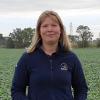In today's world, viewing the entirety of complicated systems is becoming increasingly important. Taking this stance allows for seeing the complexity and interconnectedness of these systems to help us build a better future.
Please share information, resources and experiences relating to our food & farming systems.





